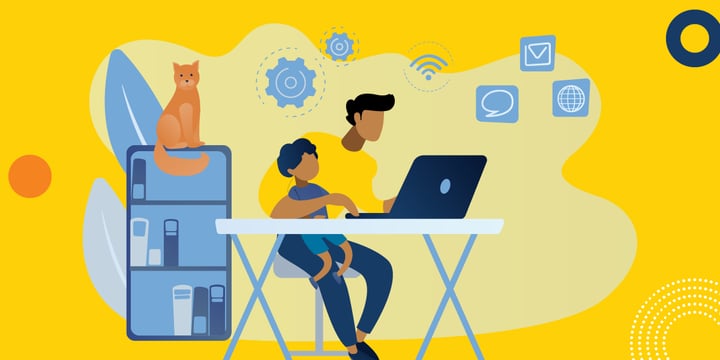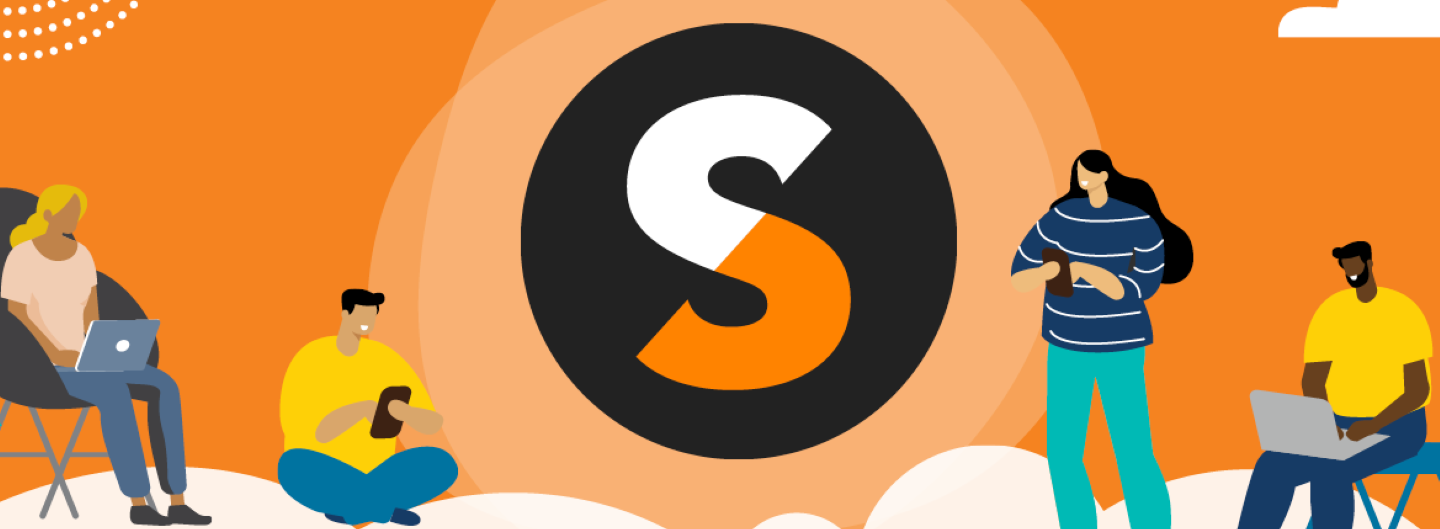As shelter-in-place orders were implemented to slow the spread of COVID-19, the nonprofit workplace as we knew it changed significantly. Transitioning to remote work may have been a challenge since many nonprofits had to move quickly to do so, and only half of nonprofits had preexisting telecommunity policies (PDF). While that alone came with its own complications, there is one aspect of work that risks being overlooked in the transition: how to keep diversity, equity, and inclusion (often referred to as DEI for short) in the forefront when working remotely.
As most work has shifted to respond to this moment, so do DEI efforts. Women, people of color, and people with disabilities may face particular obstacles with remote work. To keep DEI considerations top of mind, take the time to look at the ways in which working from home is affecting different populations differently. See what can be done to increase its positive impacts instead of its negative tolls, especially as nonprofits begin considering working remotely in the long term.

What ways has remote working — and the virtual tools that enable our work — hindered minorities on staff? In this post, we will present a few obstacles that remote work creates and offer some suggestions for overcoming them.
Parenting During the Pandemic
For many parents with young children, they have not only had to adapt to working remotely, but also to helping their children do their schoolwork from home as well. COVID-19 has forced not just schools, but day care centers and summer camps to close, leaving parents with few, if any, alternative childcare options. Some reports show the burdens of childcare have disproportionately fallen on the shoulders of mothers. Mothers have reported typically spending around six hours providing childcare and home schooling every working day, leaving little time for work. Given that women make up the majority of the nonprofit sector — nearly three-quarters of the nonprofit workforce — this is a particularly pressing issue for nonprofit organizations to address.
To support working mothers, offering flexibility in working hours is key. Nonprofit HR suggests "allowing such employees to work hours that are different than their usual work schedule, such as in the early morning, late at night or on the weekends in order to get their work done." As we transition back into offices, it will be vital to offer childcare support at work. If childcare options are not available, many will be left with a difficult choice that may lead to a widening gender pay gap.
Virtual Meetings and Gender Imbalances
Women without children, or mothers with childcare support (or at least a quiet place to hold meetings uninterrupted) may face a different obstacle: speaking up.
While platforms like Zoom have allowed meetings to take place remotely, they have exacerbated preexisting gender inequalities. According to linguistics professor Deborah Tannen, video calls amplify imbalances in the ways men and women communicate professionally. This leads to women being interrupted, talked over, or not given the opportunity to share by their male colleagues, who are more comfortable voicing their ideas.
Some of the tricks women have learned to use in the workplace do not translate to the virtual space, where body language and nonverbal cues cannot substitute when words fall short, as pointed out in a New York Times article on the subject. As the nonprofit sector has a significant gender gap in leadership positions, these disparities risk being overlooked or may contribute to further widening the existing gap.
To respond to this, it is helpful to put in place some video conferencing guidelines and policies. These can ensure that everyone is sharing their time and making space for all employees to contribute equally. Additionally, Laura Liswood, the secretary-general of the Council of Women World Leaders, writes that managers running calls have a duty to ensure a level playing field when they mediate conversations, and in doing so ought to make space for women.
Code-Switching While Video Conferencing
While video conferencing may pose some challenges to all women, it poses an additional complication for Black women. Some Black employees have had to learn to code-switch in the office to get ahead by adapting their speech and mannerisms to a white environment to limit stigmatization. And, as Zoom calls bring colleagues into our homes, some Black employees have had to figure out how to code-switch while at home.
It can be difficult for Black employees to choose what and how much of their home life to share, knowing this invasion of personal space increases Black workers' vulnerability to biases and judgments of their professionalism. Shonda Buchanan, author of Black Indian, writes about being uncomfortable the first time she took a Zoom call from home. She is keenly aware that the way she presents her home environment may single her out: "Accessories and symbols of culture and faith don't make us any less intelligent, confident, essential or professional. But they often mark us as different in institutions where implicit bias is a reality." Navigating workplace dynamics over Zoom has been a new challenge.
Laura Roberts and Courtney McCluney, experienced DEI practitioners, have a few suggestions. Instead of mandating that all employees turn on the video feature when in remote meetings, allowing each individual to choose when to turn on their cameras demonstrates respect of personal boundaries.
Furthermore, making virtual backgrounds the norm helps create a level playing field, without making those who opt for one to feel uncomfortable. This may make it easier for Black employees to work from home without sharing personal content that makes them feel vulnerable in a white workplace.
Accessibility Issues with Digital Tools
For people with disabilities, video conferencing systems don't just make it harder to contribute to meetings, they sometimes make it impossible to do so. People who are hard of hearing rely heavily on facial expressions, lip reading, and body language, all of which are much harder to read on a screen. According to The Guardian, three-quarters of deaf people believe they will be less productive working from home.
On the other hand, those with visual impairments cannot easily pick up on purely visual cues. Neurodiverse employees may need more accommodations from home than at work. Someone with autism, for example, may have a harder time with virtual meetings, because they do not provide the social cues they usually rely on in the workplace.
Take into account the particular needs of your differently abled employees as you adapt to the digital sphere. This research center and the University of Melbourne offer some helpful tips about how to ensure that a virtual meeting is accessible to deaf and hard of hearing people. TechSoup offers some tools that can help facilitate accessibility, such as closed-captioning. If you are new to this topic, please take a look at our guest post by Ruh Global IMPACT. Touch base with each of your employees and colleagues to ask if they need any additional accommodations while remote.
An Ongoing Commitment to Diversity, Equity, and Inclusion
As we move forward towards a more inclusive virtual workplace, we must commit to ensuring diversity, equity, and inclusion and match these commitments with tangible action. How can your workplace adapt to meet these new challenges and the needs of all your employees? Remember that what works for you might not work well for your colleagues and employees. Be open to people's varying needs, offer support when you can, and allow for flexibility as needed.
Here are just a few suggestions on how to start what is a long and ongoing process.
- Virtual backgrounds for all! There are plenty of fun options available. Or consider having a branded background that everyone in your organization can use.
- When video is not necessary, stick to a phone call or voice-only chat.
- Ask employees what their needs are and work to accommodate them.
Nonprofits have responded to the quickly changing workplace and shown ingenuity in responding to ever-changing needs. As we continue to adapt, nonprofits must center the needs of all employees equitably as well.
Additional Resources
- Nonprofit Quarterly, Getting It Right: Diversity and Equity in the Age of COVID-19, Ewuare Osayande
- World Economic Forum, 4 opportunities to open up on diversity after the coronavirus, Laura Liswood
- The Keyword, How to foster inclusion while working from home, Melonie Parker, Google Chief Diversity Officer
- TechSoup's Digital Divide During a Pandemic webinar
- Get assistance from TechSoup's Website Services and Help Desk.







